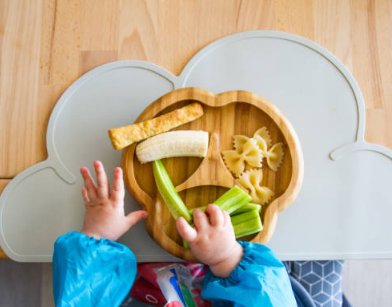Young children are notoriously picky eaters. From a year later, even the previously gluttonous seems to have suddenly lost interest. As young children grow older, they develop strong opinions about what’s on their plate (and where it’s located). Because feeding is at the heart of nurturing, the child’s rejection of the food we have carefully prepared goes to the core. At times like these, it’s important to see the big picture. You are teaching your child to eat healthy so that she can take care of herself throughout her life. Seeing things from her perspective can help you with this task.
This pickiness is normal for children between the ages of 1 and 3. Your child is trying to build her independence and let you know that she wants to be in control. She is also adapting to a growth pattern that will lead her towards her genetic body type.

Why Does My 1 Year Old Eat Less?
On your child’s first birthday, she may be more fascinated by learning to walk Xi than to eat. As a result, her interest in food plummeted: she was too busy to have time to eat. But this is normal: your child grows more slowly in the second year, and her appetite will be appropriately reduced. The extra fat she stores in her first year will help propel this exciting movement. Don’t expect long meals now.
Still, children at this age need energy to keep going. One-year-olds quickly run out of gas and may become frantic or irritable. She best eats five to six small meals a day, including two to three healthy snacks. Feed her a small amount of food and add some if she finishes eating. Overwhelmed with a large amount of food, toddlers will only be made to throw it all out into the sea from a high chair or table.
Is My Child Eating Enough?
Because it’s hard to hold him in place, every bite counts for a busy child. Empty calories in cookies, candy, or juice can waste your child’s time and appetite. If you or your healthcare provider think your child needs to consume more calories, you need to consider increasing the nutritional value of each bite of food rather than increasing the amount he eats. For example, consider putting an extra layer of butter or cream cheese on your toast or an extra layer of thick cheese on your muffins.
Provide nutritious food to your child at regular meals, but don’t force him to eat. If toddlers are able to decide for themselves when to stop eating, they will develop healthier eating habits when they Xi grow up. It’s your job to make sure that healthy, appealing food is served regularly in the same dining place. Your child is responsible for whether or not to eat at that time. If he passes once, he will be hungrier at the next scheduled time.
Have a Seat
Having your child sit with you during regular mealtimes, no matter how much he eats, will eventually teach him to eat at mealtime. Toddlers and preschoolers love to eat at the table with their families, and this is a great opportunity for them to learn Xi socialization and table manners. If your child resists or throws food, he lets you know that he is done. Sit him down or give him a book to read, but don’t coax him to eat more. It sparks a battle that you can never win.

Havoc
Your child learns a lot from “playing” with food. Throwing food on the floor, squeezing it, smearing it are all ways she learns about food and how to enjoy eating it. She may not be able to use the spoon well, but she should have one anyway, as a practice Xi. Toddlers want to eat on their own, and you should encourage them to do so by letting them eat, no matter how messy they are. Your child may also be learning how to use Xi cup; again, this means a lot of leaks. Your best bet is to learn to live with the mess by using (and wearing) easy-to-clean materials.
Eating Tips and Strategies
For example, if your child decides to eat only pasta, talk to your healthcare provider about whether he should be given baby vitamins. In general, children don’t need extra vitamins, but if your child does get into an argument over food, it may make you feel better. Do not give him adult vitamins – they can be toxic to children.
Finally, developing good eating Xi means eating in a regular dining place, such as a high chair or chair in the kitchen or restaurant. This doesn’t mean walking around in front of the TV, in the bedroom, or around the house. Young children who walk and eat are at risk of choking, as well as long-term bad Xi.

